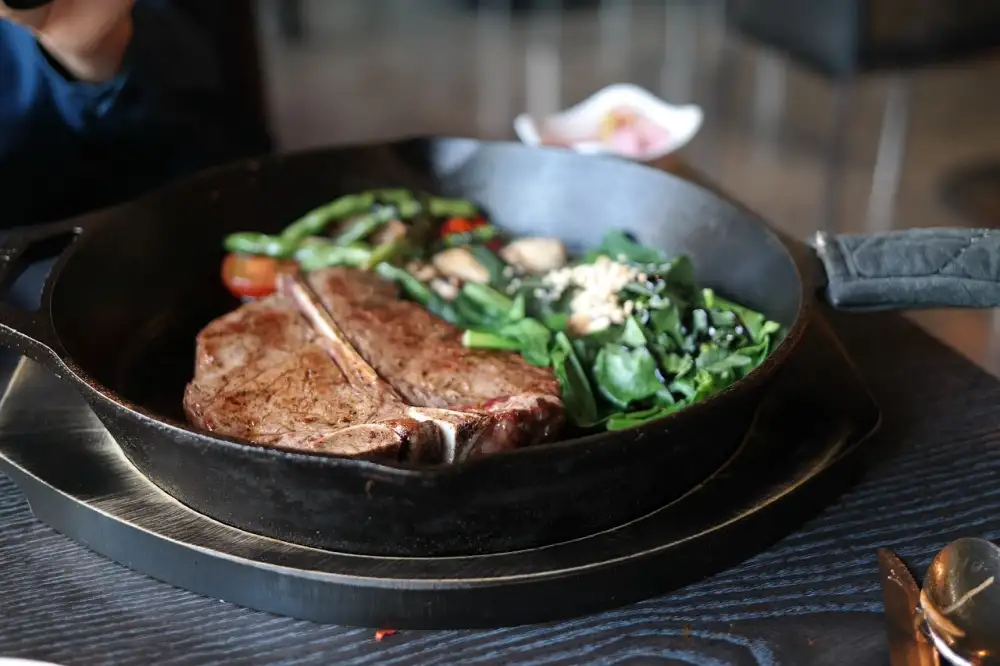Revive Your Cast Iron Skillet: Master the Art of Cleaning for a Spotless Home

Cleaning a cast iron skillet may seem like a daunting task, but with the right techniques and supplies, it can be a breeze. Whether you've just purchased a new skillet or want to revive an old one, proper cleaning is essential for maintaining its longevity and ensuring delicious meals every time. In this article, we will guide you through the step-by-step process of cleaning your cast iron skillet, from gathering necessary supplies to storing it properly. So let's dive in and master the art of cleaning for a spotless home!
Gather necessary supplies for cleaning
To effectively clean your cast iron skillet, it is important to gather the necessary supplies beforehand. Here's what you'll need:
1. Coarse salt or baking soda: These abrasives help to remove stubborn food particles without damaging the skillet's seasoning.
2. Soft sponge or brush: Opt for a non-abrasive sponge or brush to avoid scratching the surface of the skillet.
3. Mild dish soap: While some purists prefer not to use soap on their cast iron, a small amount of mild dish soap can be used if needed.
4. Hot water: Hot water helps to loosen food residue and makes cleaning easier.
5. Paper towels or clean cloth: These are essential for drying the skillet thoroughly after cleaning.
By having these supplies ready, you'll be well-prepared to tackle the task of cleaning your cast iron skillet effectively and efficiently.
Preparing the skillet for cleaning
Preparing the skillet for cleaning is an important step to ensure effective and safe cleaning. Start by allowing the skillet to cool completely after use. Never attempt to clean a hot skillet as it can cause burns. Once cooled, remove any excess food particles or debris using a stiff brush or scraper. Avoid using soap or abrasive cleaners at this stage as they can damage the seasoning of the skillet. Instead, focus on gently scrubbing away any stubborn residue. If there are any stuck-on bits that won't come off, you can try adding some water to the skillet and bringing it to a simmer on the stovetop to loosen them up. After removing all visible debris, rinse the skillet under warm water and pat it dry with a clean towel. Now your cast iron skillet is ready for the next step of cleaning!
Cleaning the cast iron skillet
Cleaning the cast iron skillet is an essential step to maintain its longevity and ensure a spotless cooking experience. To begin, use a stiff brush or sponge to remove any food residue or rust. Avoid using soap as it can strip away the skillet's seasoning. Instead, opt for hot water and scrub vigorously.
For stubborn stains, create a paste by mixing equal parts of salt and baking soda with a few drops of water. Apply this paste to the affected areas and scrub gently. Rinse the skillet thoroughly with hot water, ensuring all traces of the paste are removed.
Once clean, dry the skillet completely using a towel or by placing it on low heat on the stovetop until all moisture evaporates. This step is crucial to prevent rusting.
Remember to never air-dry your cast iron skillet as it can lead to moisture buildup and potential damage. After drying, apply a thin layer of vegetable oil or melted shortening to the entire surface of the skillet, including the handle. This process is called seasoning and helps protect against rust while enhancing non-stick properties.
To season your skillet, preheat your oven to 350°F (175°C). Place the skillet upside down on the middle rack and bake it for one hour. Allow it to cool in the oven before removing.
Properly storing your cast iron skillet is equally important in maintaining its cleanliness. Once cooled and seasoned, place a paper towel or cloth inside to absorb any excess oil and prevent dust accumulation. Store it in a dry place away from moisture-prone areas such as under sinks or near windows.
In conclusion, cleaning your cast iron skillet is simple yet crucial for its longevity and performance in the kitchen. By following these steps regularly, you'll ensure that every meal cooked in your beloved cast iron skillet is truly exceptional.
Drying and seasoning the skillet
Drying and seasoning the skillet is a crucial step to ensure its longevity and prevent rusting. After cleaning, use a clean towel or paper towels to thoroughly dry the skillet. Make sure there is no moisture left on the surface as it can lead to rust formation.
Once dry, it's time to season the skillet. Seasoning creates a protective layer on the surface of the cast iron, enhancing its non-stick properties and preventing food from sticking. To season, apply a thin layer of cooking oil or shortening all over the skillet, including the handle and exterior.
Next, place the skillet upside down in an oven preheated to 350°F (175°C). This allows any excess oil to drip off while baking. Let it bake for about an hour, then turn off the oven and leave the skillet inside until it cools down completely.
Repeat this process several times to build up a good seasoning layer. Each time you use your cast iron skillet for cooking, it will further enhance its seasoning.
Remember not to use soap or harsh detergents when cleaning your seasoned cast iron skillet as they can strip away the seasoning. Instead, simply rinse with hot water and scrub gently using a brush or sponge if needed.
By properly drying and seasoning your cast iron skillet after each use, you'll maintain its quality and enjoy many delicious meals for years to come.
Storing the cast iron skillet properly
Storing the cast iron skillet properly is crucial to maintain its cleanliness and prevent rusting. After cleaning and seasoning, make sure the skillet is completely dry. Moisture can lead to rust formation. To store it, place a paper towel or cloth inside the skillet to absorb any remaining moisture. Then, stack other pans or skillets on top of it to save space in your kitchen. Alternatively, you can hang it on a sturdy hook or store it in a cool, dry place. Avoid storing it in a damp area like under the sink or near a dishwasher. By following these storage tips, you'll ensure that your cast iron skillet remains spotless and ready for your next culinary adventure!
In conclusion, cleaning a cast iron skillet is essential for maintaining its longevity and ensuring delicious meals every time. By following the steps outlined above, you can easily revive your skillet and keep it spotless.
To maintain a clean cast iron skillet, remember these tips:
1. Avoid using soap or harsh detergents when cleaning to preserve the seasoning.
2. Use a stiff brush or sponge to remove any food particles.
3. Dry the skillet thoroughly after each use to prevent rusting.
4. Apply a thin layer of oil after cleaning to maintain the seasoning.
5. Store the skillet in a dry place to prevent moisture buildup.
By incorporating these tips into your cleaning routine, you'll be able to enjoy the benefits of cooking with a well-maintained cast iron skillet for years to come. Happy cooking!
Published: 24. 12. 2023
Category: Home



